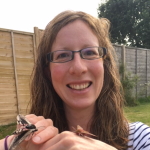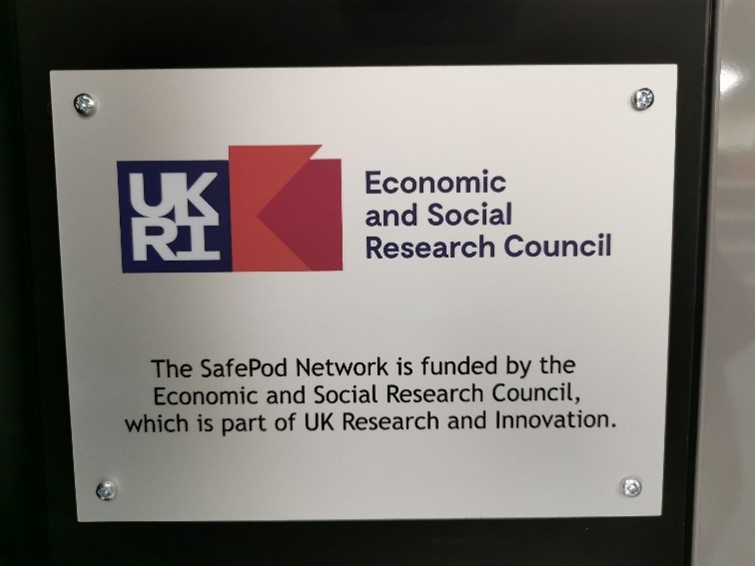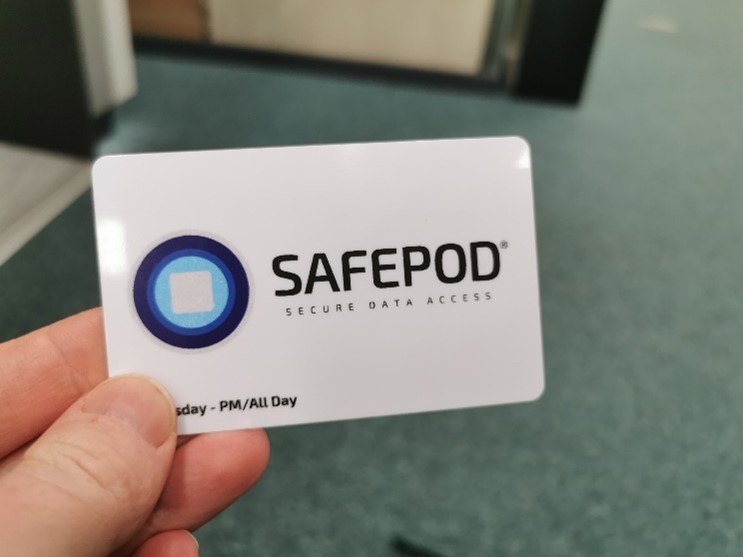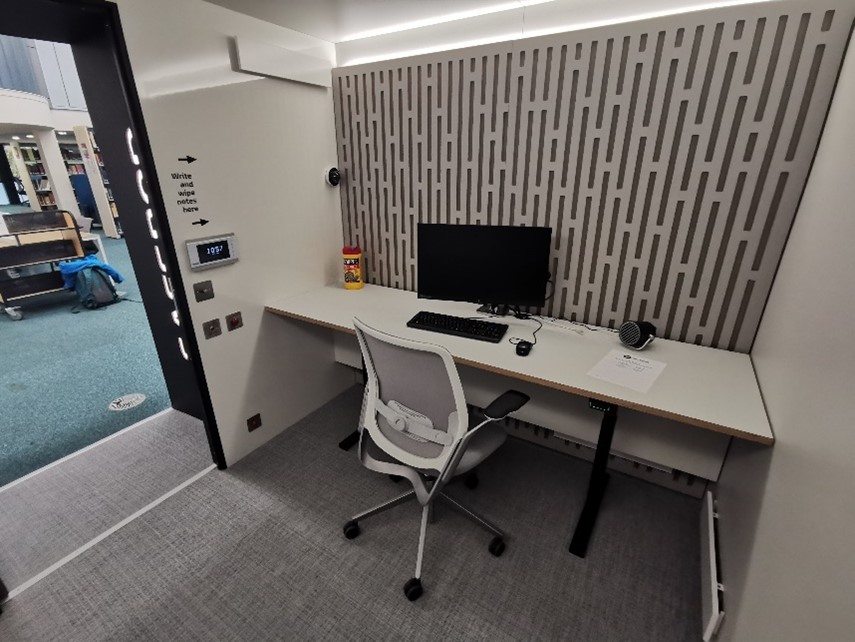 The SafePod Network is a brand new way to access secure data. We asked Sarah Knight, one of our #DataImpactFellows, to find out more. Today in the second post in her mini-series, Sarah tells us what it was like to book and use the SafePod at the University of York.
The SafePod Network is a brand new way to access secure data. We asked Sarah Knight, one of our #DataImpactFellows, to find out more. Today in the second post in her mini-series, Sarah tells us what it was like to book and use the SafePod at the University of York.
How can I book a SafePod?
I found the booking process easy, quick, and well-supported by online information.
First, I needed to register with the SPN on the website (I registered as a researcher, but there are also options for an organisation, data centre or private researcher to register too). A confirmation email appeared within the hour! This provided clear instructions for the next steps.
Next, I needed to log on to the SPN website again and review and accept the SPN terms and conditions (give them a good read but rest assured, there’s nothing surprising in there).
After that, I was asked to complete the online SPN User Training Questionnaire! This required a good read of the SPN User Policy and Agreement document which is available online.
The document details everything you need to know about using the SafePod, from how to secure a booking, what happens on the day, security, and safety instructions, and who to contact with any questions.
It’s easy to read and very thorough!
Questionnaire time! The questionnaire is online and features 24 true or false questions. Quite simply, if you’ve read the User document, you’ll get them all right.
Your answers are submitted online and, when these have been checked, you will receive automatic confirmation that you have passed (or failed!) If you have passed, you can then make a booking to use a SafePod.
Booking was easy and clear: I selected which SafePod I wanted to use and selected a slot from the pod’s calendar. At this point, you must enter all the relevant information for that booking.
For example, I needed my UK Data Service SecureLab project number and title, and all requests for the SafePod that day e.g. the number of researchers to enter the SafePod (you are allowed up to 2 at any one booking), use of the whiteboard, and any additional devices.
Do really think about what you will realistically need, it’s probably less than you think!
When this was completed and submitted, it was checked by the Data Centre requested (the UK Data Service in my case).
If they’re happy, you will receive confirmation of your booking soon (it says it’ll take up to 3 days, for me it only took 5 hours).
As well as this confirmation, I also received an email from the York SafePod team, confirming my booking and welcoming me to the SafePod.
The whole process was straightforward, thorough, and clear and was supported by the SafePod Network Manager, Darren Lightfoot. Darren was extremely responsive throughout the registering and booking process and is a great point of contact for any queries or problems.
On the day
SafePod day was finally here and I was excited.
At York, the SafePod is situated in the university library, so I went to the reception and was met by the team.

I was required to show a form of ID (only passport or drivers’ licence are accepted) before they let me anywhere near the SafePod, but this was stipulated in all correspondence beforehand so remember this – you can’t get access without it!
Next up a member of the team gave me a short induction and tour of the Pod.
He gave me the access swipe card and the locker code, and showed me how to use these features, as well as the door webcam, the emergency buttons, and how to change the height of the desk!

I put all my possessions in the locker (that included my mobile phone, wallet, everything!) We said farewell, closed the door (it automatically locks), and there I was… captain of this new data ship.
It was incredibly easy to start using. I simply clicked on the data service logo I needed, logged in using my usual SecureLab credentials and I was in.
In the York Pod there is a computer, currently one big computer screen, but soon to be two I am told, and very little else! The telephone was removed, and the CCTV turned off, all as expected.
I had chosen not to use the whiteboard, but that option was there if I had needed it, and I hadn’t taken anything in with me, not even a pen and paper. The desk moves up and down, so does the chair, and there’s a light dimmer switch that you can adjust for your comfort.
It really is a nice work environment, way better than my home set up!

A very nice feature of the SafePod is that no one can come in unless you let them. It really is a very secure place to access data, plus it provides a very safe and peaceful place to work.
If someone needs to enter, for security reasons for example, they can buzz the intercom, you see them on the video, and you can select to let them in. At this point, the computer screen automatically locks.
Let’s talk about comfort. I took a toilet break. As soon as the door opens, the screen turns off. As soon as you are inside again, it automatically turns back on.
Finishing up a hard day of data analysis
When I was finished, I simply signed out of the SecureLab as usual and collected my things from the locker. I went back to the reception to return the swipe card and locker code, said my goodbyes to the lovely team, and away I went to ponder on my data findings.
Tomorrow, in my final post in this mini-series, I’ll look at the benefits of the SafePod network.
About the author
Sarah is an ESRC Postdoctoral Fellow at the Environment & Geography department, University of York investigating the links between socioeconomic and environmental inequalities and nature connectedness.
Specialising in nature-society relationships and geospatial approaches, Sarah is interested in employing quantitative, qualitative and participatory methods to study GIS, green and blue spaces, health & well-being inequalities & ecology. She has worked on several projects at York such as a Green Social Prescribing evaluation and the EU-funded H2020 PERICLES project. Sarah completed an ESRC White Rose funded PhD in 2020 on measuring the relationship between the natural environment and subjective well-being. This involved using regression methods to explore the determinants of human well-being from green/bluespace, air pollution, and biodiversity datasets at small-scale UK geographies. Prior to joining York, she worked in the environmental conservation sector for nearly 10 years in organisations such as UNEP-WCMC, FERA and ZSL.
